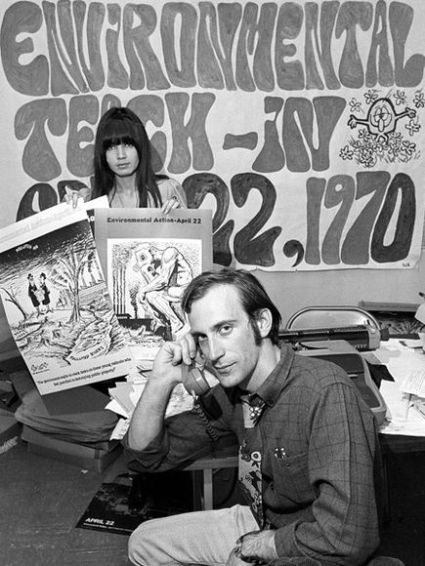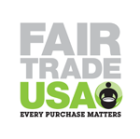
Earth Day, 1970 style. Pictured here are Judy Moody and Denis Hayes on April 22, 1970 at an environmental teach-in. Photo courtesy of AP and found at the National Geographic web site here: http://news.nationalgeographic.com/news/2009/04/photogalleries/first-earth-day-1970-pictures/#/teach-in-office_4471_600x450.jpg
April 22.Earth Day was established in 1970 to recognize the impact humans were having on the environment. By 1990 the Earth Day initiative had spread worldwide and activities are now held in over 140 countries.
I am not what you would call a staunch “environmentalist” though I do care about the environment. I do try to think where my products come from and I try to buy smartly while balancing that with my budget – never easy.
As a quilter and a lover of all things textile, especially fabric, I will never give up my fabric. I’m sure my quilting sisters and brothers would agree. But are there times I can buy smarter? Can I, even in a very tiny way, lessen the impact I have on my environment? What can I do?
I have considered, on occasion, buying organic cotton for a particular project. What I believed was that organic cotton would be the best cotton to buy if I was concerned on how the cotton was grown and how the fabric was made. I thought if it said it was organic then I was assured the cotton was organically made – sustainable growing practices, no synthetic pesticides, etc. What I have come to find out is that a cotton fabric or textile could be labeled as organic but really only have a minimum of 5% organic cotton fibers in it. To know you are truly getting all organic cotton fabric, it needs to state that it is “Certified” 100% organic cotton. I was very surprised by that a fabric could be labeled as organic and have such a low organic cotton content. Consider it the next time you look for organic cottons. To learn more about organic cotton, take a look at the Organic Cotton Initiative at http://www.cottonedon.org/. Their FAQ is quite informative.
I also didn’t realize that even though a fabric could be 100% organic cotton, it may have been dyed with completely toxic dyes. Another consideration, I suppose…
Look for this logo for your organic cottons.
The other part of buying organic, in my opinion anyway, is whether the cotton (or any other product) was produced as a Fair Trade product. What does Fair Trade mean? Here’s a description of what it means to be a Fair Trade certified product:
“Fair Trade Certified products are just that. Fair. From far-away farms to your shopping cart, products that bear our logo come from farmers and workers who are justly compensated. We help farmers in developing countries build sustainable businesses that positively influence their communities. We’re a nonprofit, but we don’t do charity. Instead, we teach disadvantaged communities how to use the free market to their advantage. With Fair Trade USA, the money you spend on day-to-day goods can improve an entire community’s day-to-day lives.” – from Fair Trade Certified’s Facebook page.
Sue, as owner of O’Susannah’s, is very aware of the existence of organic cottons and how they might fit into the shop. Currently, Sue carries Organic Sherpa Fleece but she will also be investigating a line of organic cottons at Quilt Market, in May in Pittsburgh. That line of fabric is also American made. Perhaps she can blog about it when she returns from Market to let us all know what she learns.
If you would like additional information on fair trade in the United States, visit here: http://fairtradeusa.org/
If you have any comments about this post, please share! Speaking of share – share this post, too. Do you have any memories or pictures of past Earth Days that you would be willing to send us for possible inclusion on the blog? If so, please send them. -Betsy


Interesting! Not sure how I feel about Organic vs Certified 100% Organic. Then, the possible dyes used. I’ve have to check this out further if I want to invest in organic cotton.
LikeLiked by 1 person